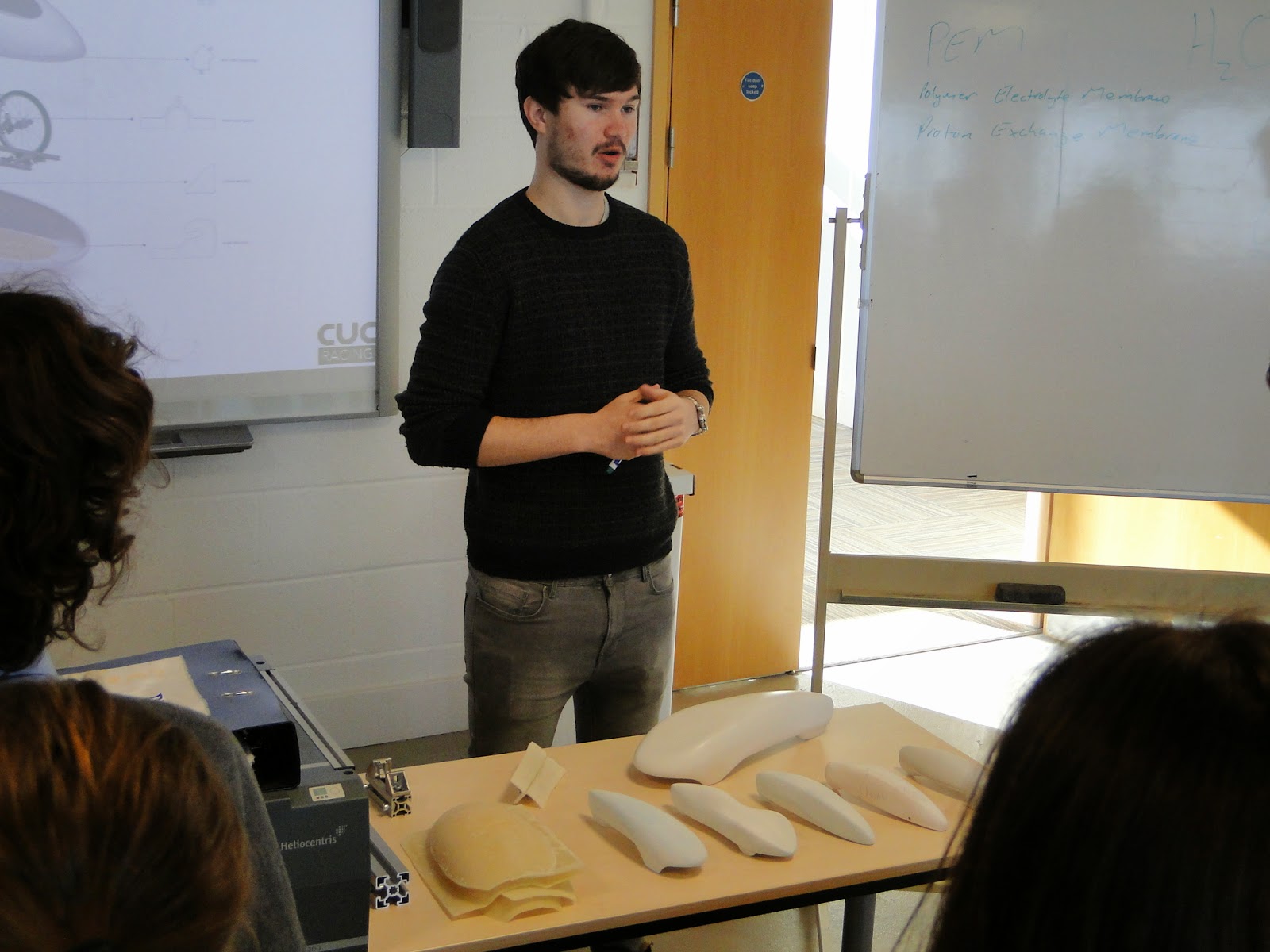One year ago we began to look into the possibility of high
altitude photography. It seemed that the most feasible method was to use a
weather balloon filled with helium as it is safe and relatively inexpensive.
After some research we created a prototype which we tethered above Newquay
Airport to film the Greenpower race from a bird’s eye view. This was extremely
effective and we got some fantastic photos.
Our next issue was that the helium balloon can travel long distances
due to high winds at altitude which meant we needed a reliable method of
retrieving our payload once it had landed. With little experience in this
field, a GPS tracker which used a mobile phone signal seemed the way to go. We
therefore picked up two cheap devices for testing.
Another hurdle was that we needed a sturdy and high quality
camera to make the journey without being damaged by the extreme cold and lack
of pressure. A GoPro seemed the obvious answer and our teacher was willing to
donate his old one however the limited battery life was a problem. We therefore
hardwired an auxiliary battery supply to ensure we didn’t lose any valuable
footage.
A further problem was the weight of our payload, which we needed to
keep as light as possible. We bought a polystyrene transport box, packed it
with solid roof insulation and cut out sections to fit the camera, GPS unit and
batteries. We didn’t want to take the risk of our GPS and batteries freezing as
they ascended and the temperature fell to about -55 degrees. So we packed two
handwarmers around them before positioning them right in the centre of the box.
The amount of helium was also critical, as we needed to lift the
payload at 5 metres per second to get enough altitude before the low pressure
expanded the balloon so much that it burst. This meant calculating quite
precisely how much weight the balloon had to lift before we attached the
payload and let it go. There is a lot of information on the UK HAS website http://ukhas.org.uk/ including a spreadsheet that calculates this
for you.
We had obtained approval from the CAA (Civil Aviation Authority) to
launch in a three day window from Colliford Lake on Bodmin Moor between 7.00 am
and 2pm as we were flying over airspace used by Bodmin, Plymouth and Exeter
airports. After a very early start we finally launched at 7.40am into the fog,
having run a landing prediction program http://habhub.org/predict/
that showed we should land in the
Sidmouth area in about 2 hours. We were very anxious as there was quite a
strong westerly wind and we were predicted to fly very close to the sea.
Unfortunately we lost contact with the GPS after only 10 minutes but
optimistically drove towards our planned landing area. Two hours came and went
and we were starting to think that it might not appear. We had decided to head
to the beach to wait for an hour or so but then to our delight we received a
text at 10.10 telling us that the GPS was alive and our plans were still on. When
we looked up the latitude and longitude we discovered that not only had the
balloon stayed up longer than predicted but it had drifted much further. We
eventually drove to Piddletrenthide in Dorset and after one false start found
it in a maize field just up the road in Alton Pancras. It looked on first
inspection as though the camera had taken pictures but until we retrieved the
SD card we would not know what they were. So we headed back to the Piddle Inn
in Piddletrenthide where Joanna the Landlady was astonished to find that we had
driven all the way from Truro.
We were astonished when we started looking at the photos. Not only
were there pictures but they were far better than we had ever hoped. We had
taken 1 photo every 5 seconds so could reasonably accurately time the flight
and could see from the photos that the balloon had burst approximately two
hours into the flight. But the big question was how high had it gone? We have
no way of knowing exactly but we could see that the camera case had frozen up
due to the low temperatures between 10 and 20 km high but amazingly had then
cleared again to take our most stunning pictures. So it must have gone into the
stratosphere and by analysing the distance it travelled we think it may have
gone as high as 36km or nearly 120,000 ft.
It was a long drive home but we were elated. We had taken
pictures that showed the blackness of space, the blue strip of the atmosphere
and the curvature of the earth. We had achieved with a team of 15 year olds and
some cheap and cheerful equipment what only a handful of schools worldwide have
managed to do.
We tweeted the picture to Karen Nyberg, one of the
astronauts on the International Space Station, who replied that it was an
amazing achievement.
Project team:
Orion Page, Woody Polglase, Tim Powell, Dan Kerrison Stock –
students
Martin Erents, Louise Allen – staff
With thanks to Nick Cartmill and Tom Allen





















